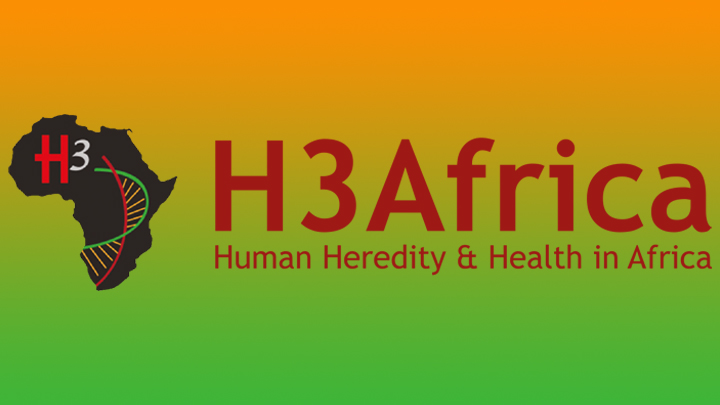
High Depth African Genomes Inform Human Migration and Health Accepted for publication in Nature
October 29, 2020
Feedback of Individual Findings in Genomic Research in Africa: Exploring Ethical Obligations and Implications
December 18, 2020
The first Homo sapiens emerged in Africa hundreds of thousands of years ago. We are all descended from that common pool of ancestors. Put another way, we are all Africans. While it’s not possible to study the DNA of these vanished original human populations, it is possible to study the genetic material of today’s African peoples to learn more about the human genome and its evolution over time. The degree of genetic diversity in Africa is greater than anywhere else in the world.
Progress continues to be made in this important area of genomic research. The latest step forward is a study just published in the journal Nature that analyzes more than 400 complete human genomes, including 50 distinct groups of people from 13 African countries. This work has uncovered about 3.4 million unique gene variants that had never before been described, greatly expanding our knowledge of human genetic variation and its implications for health and disease.
This work is the latest from the Human Heredity and Health in Africa (H3Africa) Initiative , which I helped establish a decade ago. This partnership between NIH, the Wellcome Trust, and the Alliance for Accelerating Excellence in Science in Africa (AESA) seeks to train a new generation of African scientists in genomic science and other disciplines, while conducting state-of-the-art health research on the African continent. The hope is to help these scientists use their new knowledge to improve human health in Africa and to help fill significant gaps in our knowledge of the diversity within human genomes.
The new study was led by Zané Lombard, the University of the Witwatersrand, South Africa; Neil Hanchard, Baylor College of Medicine, Houston; and Adebowale Adeyemo, NIH’s National Human Genome Research Institute, Bethesda, MD. It also included more than 50 other H3Africa data providers and data analysts from across Africa and around the world.
These researchers sequenced and analyzed the genomes of 426 individuals, almost all from studies and countries within the H3Africa Consortium, the network of NIH and Wellcome Trust-funded research sites in Africa. These individuals were carefully selected to provide broad coverage of the diverse landscape of African genomic variation. They also included many populations that hadn’t been studied at the genetic level before. The team focused its attention on single-letter differences, also known as single nucleotide variants (SNVs), located across the 3 billion DNA letters of the human genome.
All told, the researchers observed more than 31 million confirmed SNVs. Of the 3.4 million newly discovered SNVs, most turned up in the genomes of individuals from previously unstudied African ethnic groups with their own distinct languages. Even among SNVs that had been previously reported, several were found much more often than in other populations. That’s important because medical geneticists often include information about frequency in deciding whether a gene variant is a likely cause of rare disease. So, this more complete picture of normal genetic variation will be valuable for diagnosing such genetic conditions around the globe.
The researchers also found more than 100 regions of the genome where the pattern of genetic variation was suggestive of underlying variants that were evolutionarily favored at some time in the past. Sixty-two of those chromosomal locations weren’t previously known to be under such strong natural selection in human populations. Interestingly, those selected regions were found to contain genes associated with viral immunity, DNA repair, reproduction, and metabolism, or occurred close to variants that have been associated with conditions such as uterine fibroids and chronic kidney disease.
The findings suggest that viral infections, such as outbreaks of Ebola, yellow fever, and Lassa fever, may have played an important role over centuries in driving genetic differences on the African continent. The data also point to the possibility of human adaptation to differences across the African continent in local environments and diets, and these adaptations could be relevant to common diseases and traits we see now.
The researchers used the data to help gain insight into past migrations of human populations. The genetic data revealed complex patterns of ancestral mixing within and between groups. It also uncovered how distinct groups likely moved large distances across Africa in the past, going back hundreds to thousands of years. The findings also offered a more complete picture of the timing and extent of the migration of speakers of Africa’s most common language group (Bantu) as they moved from West Africa to the southern and eastern reaches of the continent—a defining event in the genetic history of Africa.
There’s still much more to learn about the diversity of human genomes, and a need for continued studies, including many more individuals representing more distinct groups in Africa. Indeed, H3Africa now consists of 51 projects all across the continent, focused on population-based genomic studies of many common health conditions, from heart disease to tuberculosis. As the cradle of all humanity, Africa has much to offer genomic research in the years ahead that will undoubtedly have far-reaching implications for people living in all parts of our planet.
Reference:
[1] High-depth African genomes inform human migration and health. Choudhury A et al. 2020 Oct;586(7831):741-748.
Links:
NIH Support: National Human Genome Research Institute; National Institute of Allergy and Infectious Diseases
